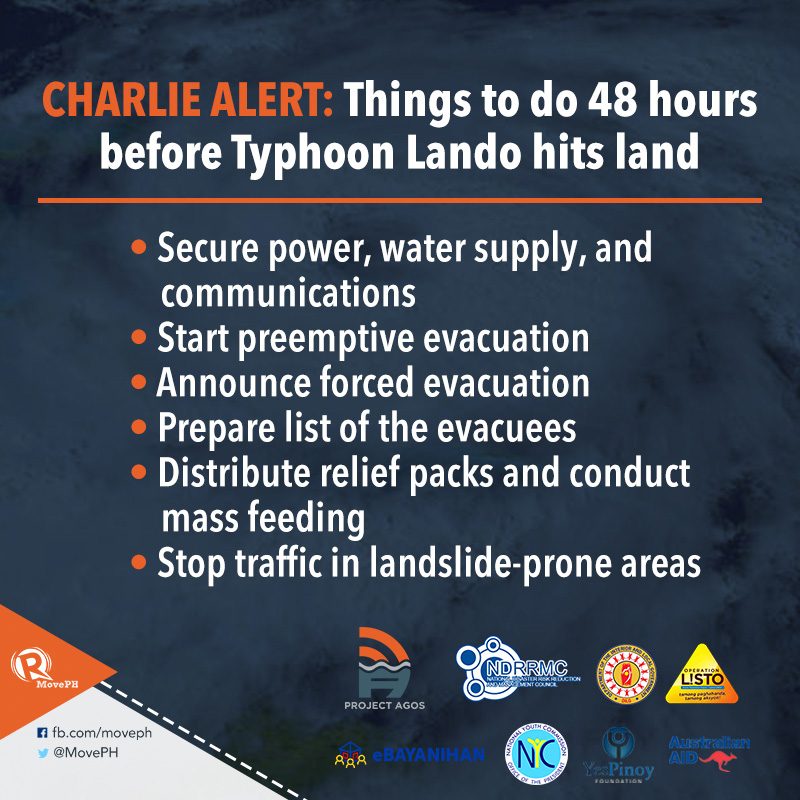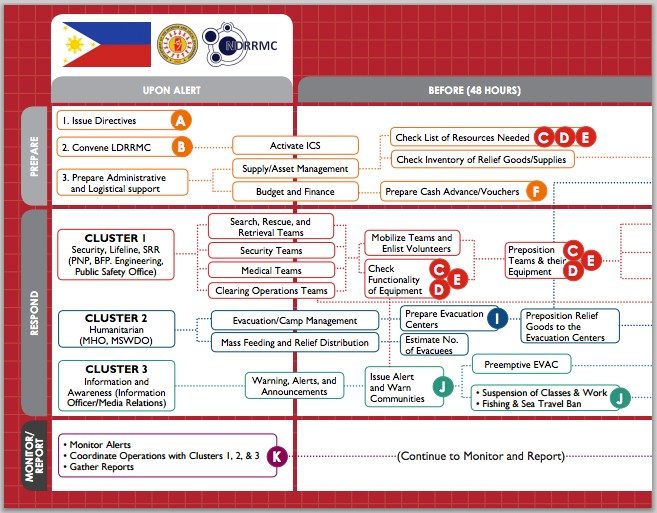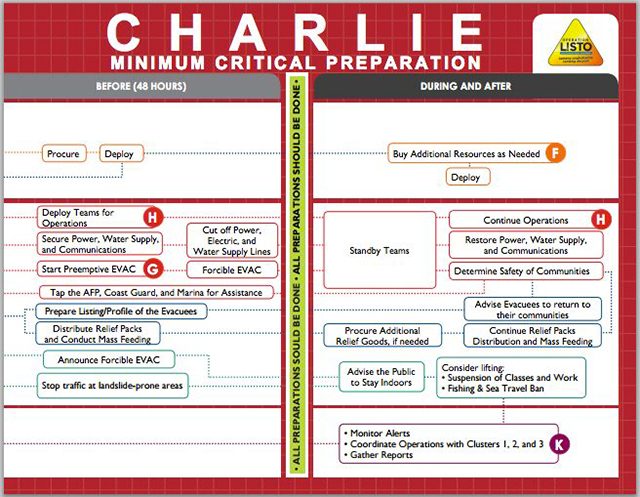SUMMARY
This is AI generated summarization, which may have errors. For context, always refer to the full article.

MANILA, Philippines – Alert level C: Charlie.
The list above constitutes critical preparedness actions local governments should take 48 hours before Typhoon Lando (Koppu) hits land, following Oplan Listo (Operation Plan Alert). This is according to Allan Tabell, chief of the Department of the Interior and Local Government Central Office Disaster Information Coordinating Center (DILG-CODIX).
The DILG placed affected provinces in Regions I-III under alert level C, Tabell said on Saturday, October 17.
Minimum critical activities that LGUs should be enforcing in affected areas include the following:
- Secure power, water supply, and communications
- Start preemptive evacuation
- Announce forced evacuation
- Prepare list of the evacuees
- Distribute relief packs and conduct mass feeding
- Stop traffic in landslide-prone areas
Meanwhile, state weather bureau PAGASA expects the typhoon to make landfall over the Isabela-Aurora between Saturday night and Sunday morning. Signal No. 2 is raised over 13 areas, and Signal No. 1 over 17 areas.
As of Saturday morning, October 17, local government units (LGUs) in Regions I to V have already been alerted about the risks the typhoon brings, National Disaster Risk Reduction and Management (NDRRMC) executive director Alexander Pama told media in a press briefing.
“Always prepare for the worst, even as we hope for the best,” Pama said, stressing that “evacuations are a given.”
Pama added that specific actions at the local level are still being defined based on risks involved including flooding and landslides.


Oplan Listo
Oplan Listo uses a new disaster preparedness manual first used by the DILG when Typhoon Ruby hit in December 2014. It provides mayors and other local government disaster management agencies a checklist that enumerates what should be done before, during, and after typhoons.
The manual stresses that the 48 hours between a typhoon’s entry into the Philippine Area of Responsibility (PAR) and its landfall is “tense and busy, which can lead to errors that can be easily avoided.”
This checklist seeks to “minimize mistakes that may cost lives and grave destruction to properties.” It includes flowcharts that correspond to 3 phases of critical preparedness actions – Alpha, Bravo, and Charlie. It also provides a tropical cyclone information board and reference boxes and minimum actions to guide mayors.
The 1991 Local Government Code and the Philippine Disaster Risk Reduction and Management Act of 2010 mandate local government units to be at the frontline of emergency measures during disasters. – Rappler.com
Check if your mayors are taking these minimum preparedness activities that LGUs should be enforcing in areas expected to be affected by Typhoon Lando. Tell us how prepared your LGUs are through email (move.ph@rappler.com) or Twitter (@moveph).
Be a Project Agos volunteer for Typhoon Lando.
Add a comment
How does this make you feel?
There are no comments yet. Add your comment to start the conversation.